Ways to Preserve Apples
This post may contain affiliate links, which means that I may receive a commission if you make a purchase using these links. As an Amazon Associate I earn from qualifying purchases.
Apples are the quintessential fall fruit, and they’re great for snacking, baking, and cooking—but they don’t last forever. Fortunately, there are several ways to preserve apples to enjoy longer. Learn tips for preserving apples including storing, freezing, drying, and canning.

The leaves are falling, the temperature is dropping, and pumpkin spice everything has taken over. The fall season is one of my favorite times of the year with all the natural beauty. This is apple season!
We have a small apple orchard on our property. Some years the fruit isn’t edible since we don’t spray our apples. We let these apples feed the wildlife. However, other times, if the conditions are right, we end up with a bumper crop of delicious fruit.

If you go apple pickling with your family and friends, you will discover how easy it is to come home with an overwhelming amount of apples. Once you have had your share of eating fresh apples, baking apple pie, and making applesauce, it is time to get serious about preserving apples before they go bad.
Tips for Preserving Apples
There are thousands of varieties of apples available across the nation from backyard trees, u-pick apple orchards, local farm stands, and grocery stores. Here are some tips for achieving good-quality apples when preserved.
Match the Right Variety to Preservation Method
There are some apples that are better for certain preserving methods than others. Choose the preservation method that is best for your apple variety:
- Storing Apples: While most apples can be stored for a short time in the refrigerator, if you are aiming for long-term storage in a root cellar or cool basement, choose apples with a tart flavor, thick skin, and are known for their storage capabilities. Some storage varieties include Fuji, Granny Smith, Honeycrisp, Macintosh, Northern Spy, and Rome. Other apples can still be stored, but they won’t last as long.
- Freezing Apples: Choose hardy apples with a dry and firm texture that will hold up to freezing without turning to mush. Common varieties recommended for freezing include Cortland, Empire, Granny Smith, Golden Delicious, Jonagold, Jonathan, and Rome Beauty.
- Drying Apples: Most apple varieties can be dehydrated. The flavor of fruit intensifies when you dehydrate it. Tart flavored apples, such as Cortland, Gala, Granny Smith, and Macintosh dehydrate well. Dried sweet apples, such as Golden Delicious, Honeycrisp, and Red Delicious taste like candy.
- Canning Apples: If you are canning apple quarters or slices, choose crisp apple varieties that hold up well when cooked. Baking apples such as Braeburn, Cortland, Fuji, Gala, Granny Smith, Honeycrisp, Honey Gold, and Pink Lady are good choices. Consider mixing several varieties for flavor.
- Applesauce: Any apple variety can be used to make applesauce or apple butter. Some tasty types include Gravenstein, Golden Delicious, Jonathan, Macintosh, Rome Beauty, and Stayman.
Since there are so many regional varieties of apples, you may not see your type on the list. If you are picking apples from a local orchard, ask which apples are best for the method you want to use to preserve them.
Harvest Mature Apples
Harvest high quality, fully develop apples with smooth skin, crispy and juicy flesh, and well colored for their variety. Apples should be harvested when they are physiologically mature but before their peak ripeness. Mature apples have finished developing and will continue to ripen and sweeten after picking.
Apples are ready to pick once they are fully colored instead of green. The seeds will have turned from white to brown, and the flesh should feel firm, but not hard. The apples will taste sweet instead of starchy.
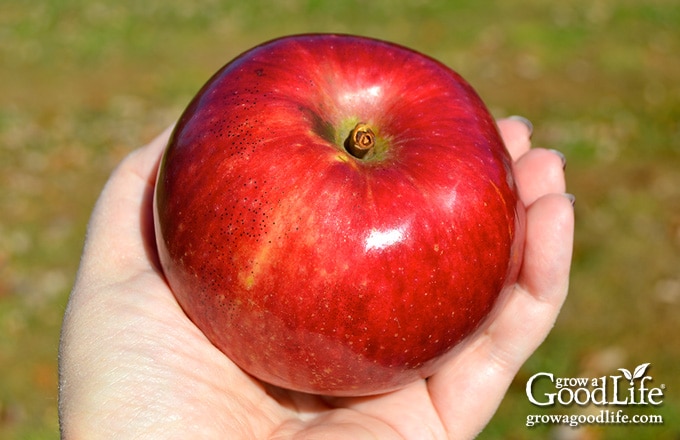
Avoid Damaged Apples
There is a variety of insects, disease and biological disorders of apples that can cause spots on the skin of apples. Most often the damage is just cosmetic and can be removed by peeling.
It is ok to trim off bad areas if the rest of the apple looks good, but avoid preserving apples that are badly damaged, bruised, or infested with worms and bugs. It is also best not to use apples that have been on the ground for a while or eaten by wildlife. Windfall apples are likely to contain bacteria and mold spores.
Methods of Preserving Apples
Here are some ideas for preserving apples, including how to store in a cool area, freeze for future baking, dehydrate for snacking, and several ways to home can apples from sauce to jelly.
My favorite tool for preparing a lot of apples is an apple peeler corer tool that peels, slices, and cores apples.
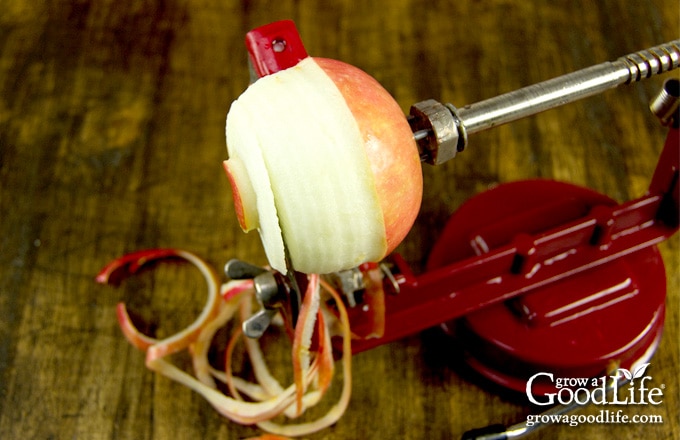
Storing Apples
Store only good-quality apples without any bruising, insect, or disease damage. Cool apples quickly after harvesting to slow ripening. Apples that are mature but not fully ripe will last longer when stored.
Refrigerator Crisper Drawer
The easiest way to preserve apples is in your refrigerator in a humidity drawer. Dedicate one drawer just for apples, use the low-humidity setting, and open the vent to allow ethylene gas to escape. Apples can last several months stored at 40 ̊F in the refrigerator.
Root Cellar
Colder temperatures allow apples to be stored longer. Select apple varieties that are known for their storage capabilities for the best results. Tart apples with firm flesh and thick skins will last longer in storage. Sweet-tasting apples have more natural sugars that will break down quicker. Be sure to use these apples first.
Air circulation is important for long-term storage. Apples release ethylene gas that can increase the ripening process. Space the apples out in a single layer, so they are not touching, or nestle them in shredded paper, and store in well-ventilated boxes or crates.

Ideal storage conditions for apples are at a temperature of 32 to 40˚F and 80 to 90% relative humidity. Apples can last up to 2 to 6 months depending on the variety.
While apples can keep for a long time when stored in a refrigerator or root cellar, they may begin to go bad. Sort through frequently and remove any soft or rotten fruit. If your apples are getting soft, it may be best to turn them into applesauce that can be frozen or canned.
Freezing Apples
Freeze in apple quarters, sliced apples, or applesauce. Depending on the variety, most frozen apple pieces will soften when frozen, but may retain their shape.
Use frozen apples as you would fresh in cooked or baked recipes. Thaw before using and include the liquid. Frozen apples can also be blended up into smoothies, mashed into applesauce, jam, or cooked in oatmeal.
Freezing Sliced Apples
Having a supply of frozen peeled apple slices is useful for future baking into pies, crisps, and other desserts. You can freeze fresh apple slices for up to 6 months.
Think about how you will use the apples and freeze in the amounts that work for your recipes. I like to freeze in 2-pound batches because that is the amount I need to make an apple pie. You can also add all the spices for apple pie filling and freeze it for future pies.
To help prevent the apples from browning, dip the slices in a lemon water bath or an ascorbic acid mixture, such as Fruit-Fresh (follow the instructions on the container). For a lemon water bath, fill a large pot with about a gallon of cold water and juice from one lemon or 1/2 cup of bottled lemon juice. Soak freshly cut pieces for 10 minutes in a pre-treatment solution of choice.
A sugar coating helps preserve texture and flavor, but you can also freeze apples plain with good results if you plan on using them within 2 to 3 months.
- Sugar Pack: Wash, peel, and core the apples. Cut into even slices. Toss about 2 pounds of sliced apples with 1/4 cup of sugar. Place the sugar-coated apples into freezer bags or freezer-safe containers, remove air, seal, date, and freeze.
- Dry Pack: Wash, peel, and core the apples. Cut into even slices. To prevent clumping, place the apple slices in a single layer on a parchment paper lined baking sheet, and freeze until the apples are solid. Then pack the frozen slices into freezer bags or freezer-safe containers, remove air, seal, date, and freeze.
Frozen apple slices will keep for 3 to 6 months in the freezer before losing texture and flavor.
Freezing Applesauce
Make the applesauce in a slow cooker using the recipe below, or simply simmer in a large saucepan until tender, and remove the skins and seeds using a food mill or food strainer.
Let the applesauce cool, and pack in freezer bags or freezer-safe containers. Leave about 1-inch headspace to allow for expansion, and freeze. Thaw in the refrigerator overnight and enjoy. Applesauce can be stored in the freezer for 8 to 10 months.

Drying Apples
With the help of a dehydrator or oven, you can dry apples to make them last longer. Just slice the apples, place the pieces on the trays of your dehydrator, and dry until leathery or crisp. The delicious flavor of the apples intensifies when dried, so don’t be afraid to mix apple varieties together for an unforgettable flavor combination.
3 Ways to Dehydrate Apples
Drying apples is a great way to preserve the fresh fall harvest. This article covers three ways to dehydrate apples, including air-drying, oven drying, and by using a food dehydrator.
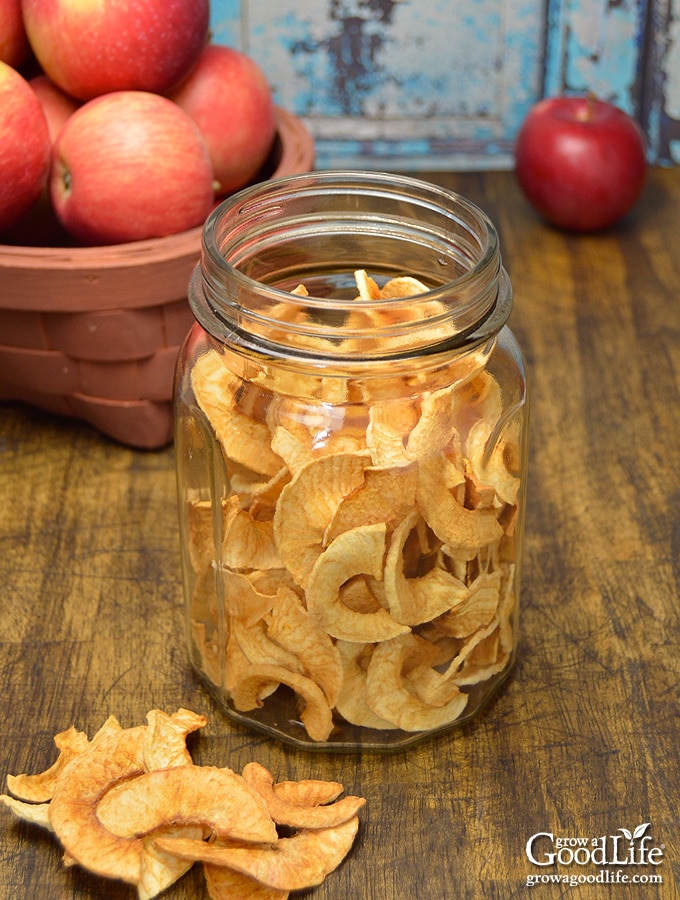
Cinnamon Apple Chips
These thin and crispy cinnamon apple chips are a great snack when you are craving something sweet and crunchy. Learn how to make homemade apple chips in an air-fryer or oven.
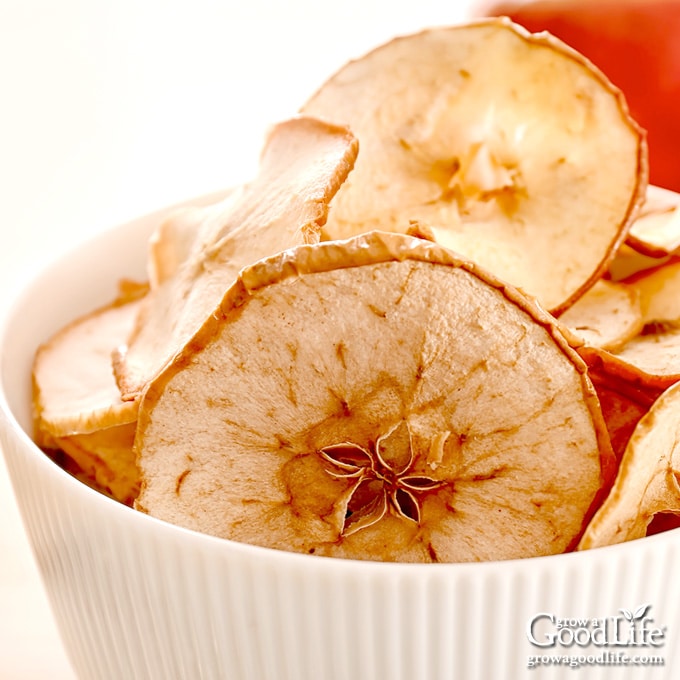
Canning Apples
Home canning apples is a great way to preserve them into shelf-stable jars. Properly processed jars of fruit will last 12 to 18 months as long as lids remain sealed, and stored in a cool, dark location. Check out the links below to see how to preserve apples into canned apples, applesauce, apple juice, or apple jelly.
If you don’t have a boiling water bath canner, you can use a large pot to process the jars. The pot needs to be tall enough to cover the tops of the jars with a few inches of water, plus at least two more inches of space to prevent water from splashing out of the pot as it boils. Place a rack or a layer of canning rings on the bottom of the pot to hold the jars up and away from direct heat, so they won’t break. You may need to can in batches depending on the size of your pot.
Canning Plain Apples
Canning fresh apples is a great way to get the taste of the season all year round. Learn how to home can plain apples slices, quarters, or chunks for your food storage shelves.
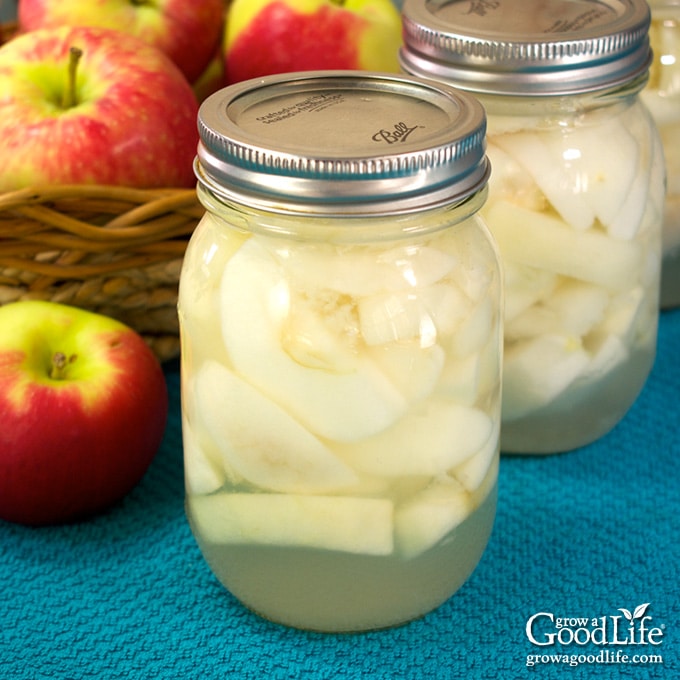
Canning Applesauce
Making your own applesauce is not only able to provide you with a healthy snack, but it can also be a great way for you to save money at the grocery store. Read the following article to see how to make applesauce and can it in a water bath canner.
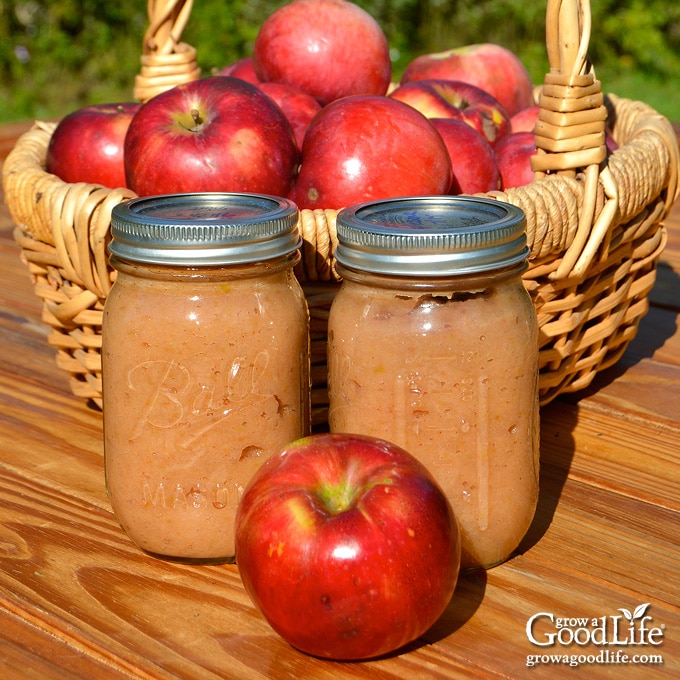
Canning Apple Juice
Homemade apple juice tastes much better than store bought juice because it doesn’t have many of the preservatives that store bought juices have. Making your own apple juice gives you the opportunity to choose from different types of apples as well as decide how sweet or tart you want it. Learn how to make apple juice and home can it for your food storage shelves.
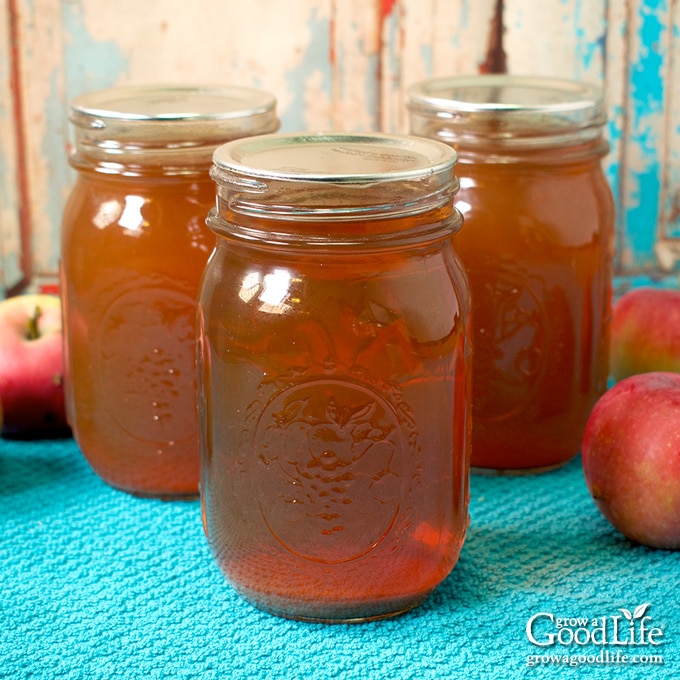
Spiced Apple Jelly
Apple jelly is a great treat for fall. It’s perfect for topping for biscuits, toast, and adding sweetness to yogurt. Half pints of apple jelly makes a nice gift too. See how to make and home can apple jelly with no added pectin at the article below.
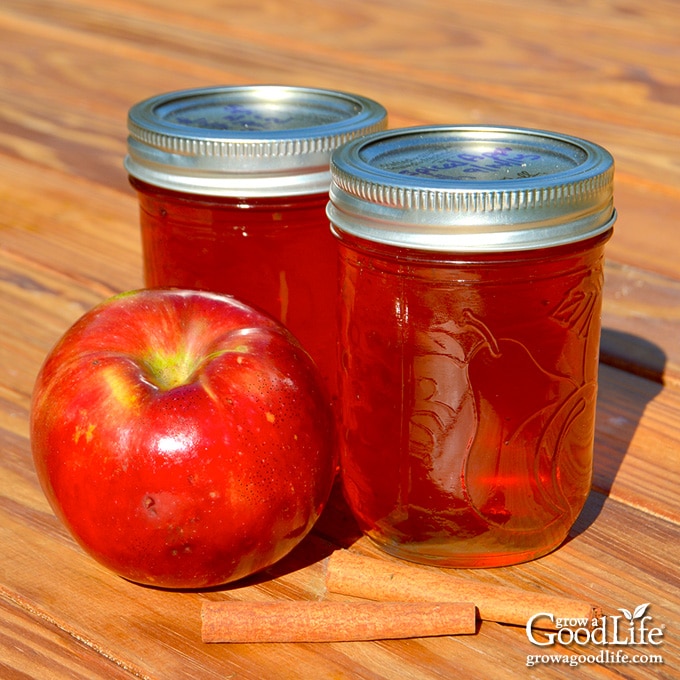
Crabapple Jelly
If you have crabapples, this recipe will put that tart fruit to good use. Making crabapple jelly is a delicious way to preserve the harvest. It can be served as a condiment with meats, poultry, and seafood, or on toast for breakfast.

Apple Scrap Vinegar
Apple scrap vinegar is a great use for apple scraps, the cores and peels leftover from preserving apples. This vinegar takes time to ferment, but patience pays off with a tasty vinegar that can be used to flavor foods. It can be used in place of apple cider vinegar in any recipe except canning.
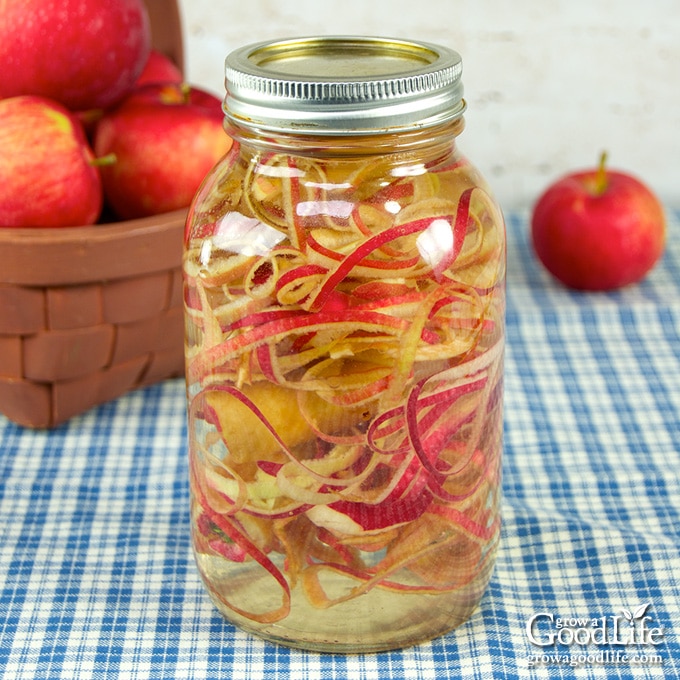
—
Apple picking is a great excuse to spend quality time with friends and family as you pick up some fresh apples for pies, snacks, or just plain eating whole. I hope I have given you some ideas to help you preserve your fall apples so you can enjoy them longer.
You May Also Like:
Good planning is key to a successful vegetable garden
Whether you are new to growing your own food or have been growing a vegetable garden for years, you will benefit from some planning each year. You will find everything you need to organize and plan your vegetable garden in my PDF eBook, Grow a Good Life Guide to Planning Your Vegetable Garden.

